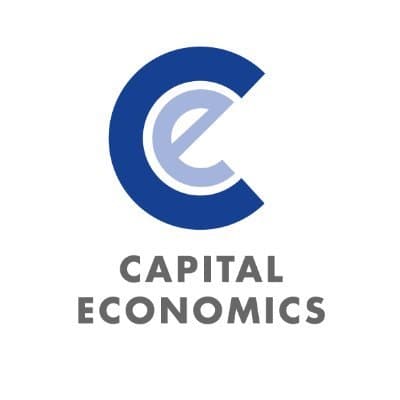Debt distress greater in Eurozone than in the UK
Private lending to European CRE is rising but unlikely to fill the funding gap — yet low rates and ongoing borrower-lender talks limit default risks.

Key highlights
CRE values have stabilised in the UK and Eurozone but the potential for stronger value growth remains limited for the rest of 2025
Private lending plays a larger role in the UK than in Europe, where 80% of CRE loans come from banks, but while interest in non-bank lending is growing, it’s unlikely to fully close the looming financing gap
Eurozone interest rates have fallen markedly, potentially making it easier for buyers to inject liquidity into their refinancings
With a major wave of defaults on Eurozone CRE unlikely to occur, the impact of refinancings should not present a major risk to valuations
CRE values stabilise, but growth outlook remains limited
A stabilisation in capital values and decline in interest rates have sparked optimism that the worst of the real estate debt refinancing challenge is in the past. This seems to be the case for the UK market. In the Eurozone, however, surveys indicate that banks are still pulling back on CRE lending and intend to tighten their credit standards and loan terms further in the coming months. Although a wave of distressed selling seems unlikely at this point, this will pose a problem in the Eurozone since banks dominate the lending market and alternative lenders are not big enough players to fully plug looming debt refinancing shortfalls.
Commercial real estate (CRE) values have bottomed out in both the UK and the Eurozone. At the very least, they have stabilised and may be on the rise again soon. While Capital Economics expects a slow recovery in the sector, the outlook is slightly brighter than anticipated a year ago. Stronger capital value growth points to the potential for a slightly stronger recovery in collateral values, which should help increase debt available at refinance on a loan-to-value (LTV) basis.
UK lenders loosen, Eurozone tights
That said, developments in CRE lending markets have been more mixed but there is evidence that LTVs on new loans ticked up last year in both the UK and Germany. LTVs for refinance will likely be lower, but this could suggest that lenders are taking on more risk now that values have stabilised. Despite increased rises in 5-year Euribor and SONIA swap rates since December 2024, the Bank of England (BOE) and European Central Bank (ECB) lowered interest rates at their most recent meetings in May and June, respectively. Based on statements from these latest policy meetings, industry experts expect borrowing costs to fall at least another 25 bps in H2 2025. Thus, pressure on interest coverage will ease for borrowers on floating rate loans or with refinancing coming due.
CRE borrowers face tighter credit in the Eurozone
However, other evidence suggests that credit conditions are set to remain tight in the Eurozone. Whereas UK lenders have been reporting increases in the availability of CRE credit since Q1 2024, this contrasts with a net balance of 16% of Eurozone banks tightening their CRE lending standards in H2 2024. Though banks reduced margins on their corporate lending, 8% tightened CRE loan terms and conditions in H2 2024, with collateral requirements the most widely cited contributor to stricter terms. In addition, an even larger balance of banks anticipated that they would tighten their CRE loan terms in H1 this year.
Debt funding gap set to peak in 2026
With banks pulling back on originations, loan refinancing shortfalls and defaults remain a risk in the Eurozone. Capital Economics’ own analysis suggests that debt funding gaps will continue to increase, with a likely peak in 2026 of around €42bn. These estimates are based on (1) Capital Economics’ forecasts for property values, (2) an assumption that 25% of loans maturing in 2023-24 were extended to 2025-26 and (3) given banks’ caution, only a gradual rise in LTVs on refinance lending to 56% in 2027 from a low of 50% in 2024.
It is important to caveat that the likelihood of a borrower defaulting depends on individual circumstance, centring on factors like the performance of the underlying asset, the underwriting assumptions of the initial loan, and the capacity of borrowers to inject additional equity if required. However, these estimates can still give a rough gauge of the amount of debt that appears to be at risk.
UK leads in non-bank lending; Europe lags
Capital Economics also thinks it unlikely that non-bank lenders will be able to fully plug this funding gap in Eurozone property, though there are regulatory changes coming which could bring more private credit into the market in the future. We note that Blackstone Group has been very active in European CRE of late – it has assumed some loans and is also committing $500 billion (~€427 billion) to the region over the next ten years, with investments in infrastructure, logistics, data centres, and AI likely to be a focus. (Apollo, Alliance Bernstein, and Nuveen are other key players in this space.)
In contrast to the UK, where non-bank lenders account for around 40% of CRE lending, figures from the ECB indicate that, in Q4 2023, Eurozone banks accounted for 80% of the €1.6trillion in outstanding loans and debt securities to Eurozone REITs, real estate companies and real estate investment funds. Even after surging during 2023 and 2024, investor interest in CRE debt came off the boil in Europe at the start of 2025.
Default risk higher in the Eurozone – but still contained
Given this backdrop, Capital Economics thinks the risk of loan defaults and forced sales may be greater in the Eurozone than in the UK in the coming years. That said, the Eurozone still appears better placed than the US, where debt risks are much greater.
Capital Economics maintains that the threat to market values across Europe from a wave of distressed selling is modest, anticipating that negotiations between borrowers and lenders will continue and should prevent what might otherwise be a wave of defaults. With interest rates expected to fall alongside rising property values, borrowers may also be more willing, where possible, to inject equity to reduce LTVs to acceptable levels.
Want to be notified of our new and relevant CRE content, articles and events?
Authors

Capital Economics

Altus Group
Authors

Capital Economics

Altus Group
Resources
Latest insights






